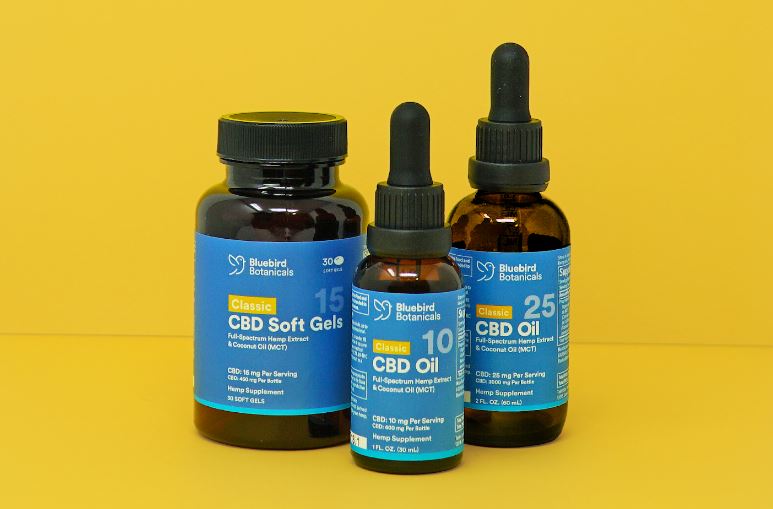WHY IS 0.3% THC THE LEGAL LIMIT IN HEMP AND CBD?

What’s the difference between hemp and marijuana? By legal definition in the U.S., it really boils down to THC content, with the distinction being whether the cannabis crop has more or less than 0.3% THC by dry weight. In most of Europe, the limit is even lower at 0.2%. But where did these legal limits even come from?
For the answer to this question, we can look to Canadian Scientist Dr. Ernest Small, who is credited with being the originator of the 0.3% figure.
Read on to learn about:
- What Total THC means
- How did the 0.3% THC limit come about
- CBD products you can use to limit your exposure to THC
Let’s Talk Total THC
We’ve heard the allowable 0.3% THC figure, but what exactly does this mean?
“Total THC” in the cannabis sativa plant refers to the amount of both THCA (raw THC, which converts into THC when heated) and THC present. So when we’re talking about total THC content, we’re including both THCA and THC when calculating the percentage in the crop.
To further clarify the definition, “by dry weight” simply means that the percentage of THC present is calculated in relation to the total cannabis plant weight when harvested and dried.
So, now that we’re savvy about the THC let’s talk about that 0.3%.
The Magic Number
It is widely recognized that this 0.3% THC cutoff for hemp is fairly arbitrary. Like Cinderella’s carriage turning back into a pumpkin at the stroke of midnight, hemp magically turns into “marijuana” by classification once it exceeds this limit.
The 0.3% dry weight figure originated from a scientific research paper entitled Small, E., and Cronquist, A. 1976. A practical and natural taxonomy for Cannabis. Taxon 25: 405-435.
In that paper, Cannabis sativa was defined with “Δ9-THC comprising less than 0.3% (dry weight) of upper, younger leaves, and usually less than half of cannabinoids of resin,” and Cannabis indica as “with Δ9-THC comprising more than 0.3% (dry weight) of upper, younger leaves, and frequently more than half of cannabinoids of resin.”
While the definition found in this paper did also make mention of Cannabis sativa having limited intoxicant ability, with Cannabis indica having a higher propensity to produce intoxicating effects, this division between sativa and indica cannabis varieties was not intended to be a prescriptive measure of the plant’s capacity to get users high.
Read: This distinction between hemp and marijuana based on THC limit is not necessarily a factor that can indicate whether a strain will or will not get users high.
Dr. Small explains further on the Cornell University FAQ page. Straight from the horse’s mouth:
“Over the years, I have had many inquiries regarding whether the 0.3% criterion was based on the potential for abuse – i.e. the possibility of using hemp to get high.
“No, it was not – the criterion was based on the pattern of variation in the real world: it happens that for thousands of years, people have selected plants for fiber (subsp. sativa; low-intoxicant plants) and for marijuana (subsp. indica; high-intoxicant plants), and my studies simply revealed this pattern.”
Despite this, as well as the fact that most cannabis-derived compounds must contain at least 1% THC to even approach producing psychoactive effects, the Canadian government moved forward using Small’s distinction as the basis for legislation. And, following Canada’s lead, the U.S. moved forward following this same guideline when it started changing the Federal law and regulations around cannabis, such as the Controlled Substances Act.
Shop For THC Free* CBD Products
Hemp Going Forward
Dr. Small did also note the challenges the current legal landscape provides for the CBD industry, particularly as hemp with up to 1% THC still offers a world of possible benefits if it is permitted to be produced. Specifically, with regards to CBD production, this 0.3% THC cut-off is particularly limiting as there are few strains that produce high levels of CBD without also producing an amount of THC that exceeds the legal limit.
Because of this, many hemp and CBD companies are hoping to push for an alteration to this limit going forward. In fact, Senator Rand Paul (R-Ky.) introduced a bill to Congress in early 2021 that would change the legal definition of hemp and raise the THC limit to 1%.
His bill, known as the Hemp Economic Mobilization Plan (HEMP) Act of 2020, would mandate testing of the final hemp-derived product rather than the hemp flower or plant itself and also define a margin of error for testing THC levels. These new stipulations would prevent crops containing more than the 0.3% legal limit from being destroyed, as is mandated under current law.
Congress also instructed USDA that its Interim Final Rule concerning hemp production needed to be improved to protect the ability of farmers to grow hemp without the imminent threat of crop destruction or the interference of the DEA.
Where to find CBD with less than 0.3% THC
Anything marketed as a CBD product should have less than 0.3% THC by dry weight. Unfortunately, you can't necessarily always trust what a company says is in their cannabis-derived products.
Your best bet for finding CBD products that contain less than 0.3% THC by dry weight is to shop with a company that provides third-party lab test results on each batch of its cannabis products. These test results will show the true amount of THC, along with other key cannabinoids, in each product. You can find Bluebird's lab test results here.
If you need to limit your exposure to THC, you may want to try a CBD isolate or broad-spectrum product. These are good alternatives for avoiding a positive drug test.
Shop Bluebird's THC-Free* Line Here
Further Reading
Can Taking CBD Cause You to Fail a Drug Test?
Full-Spectrum vs. Broad-Spectrum CBD: What's the Difference?









